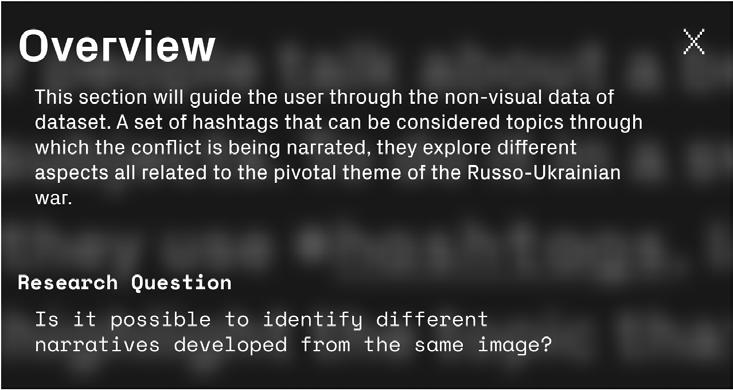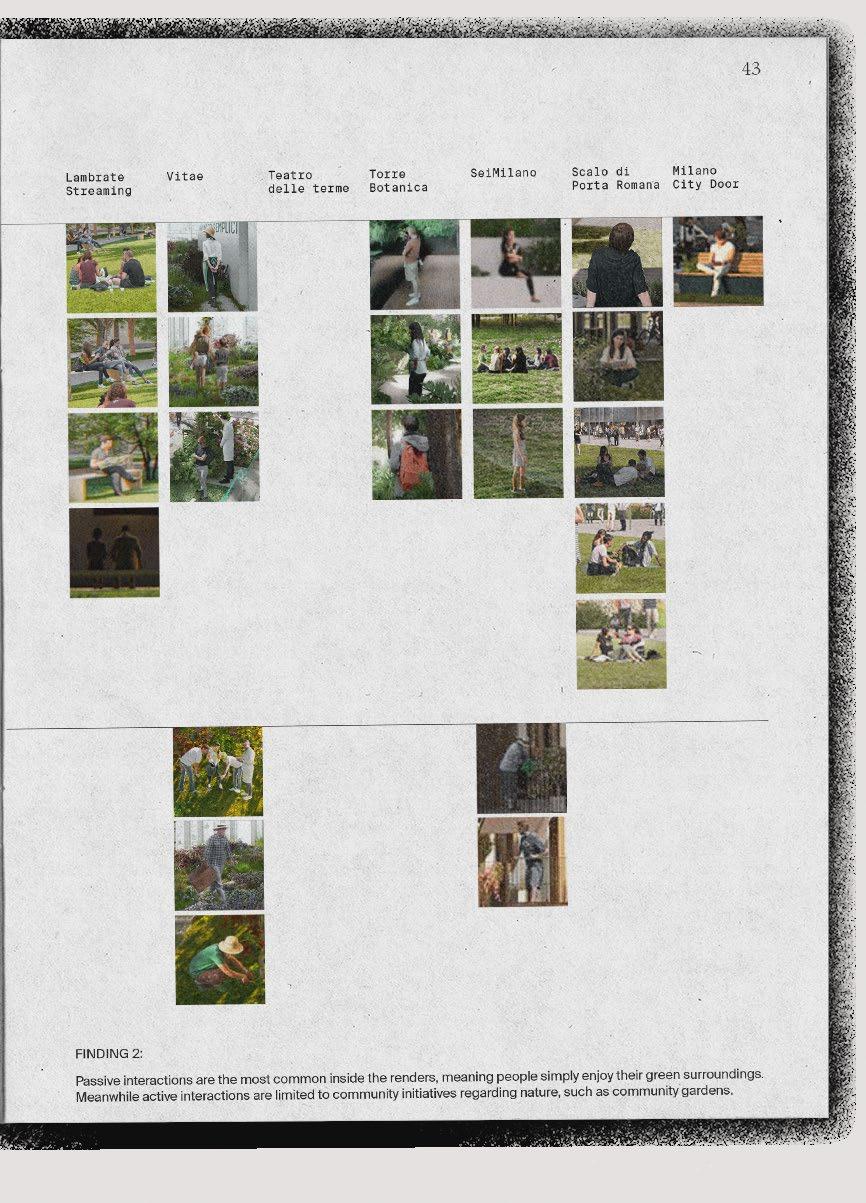This is me
Let me introduce myself, I’m Mattia, 25 years old and when I’m not busy with work projects I dedicate myself to photography, whether it is portraits of friends or landscaping of industrial eco-monsters in Italy.
I have already gathered life experience abroad with work and the Erasmus program, but at the moment I’m based in Milan, Italy. Recently, I obtained my Master’s degree with full marks in Communication Design at Politecnico di Milano.
I’m a passionate full stack developer and designer, especially for digital interaction, user experience and interfaces, photography and video making. I have a simple but iterative approach to projects, continuously questioning the already found solutions in order to improve them. I combine this approach with a very pragmatic and practical vision about the subject.
In the past couple of years, my interest towards digital aspects of projects has been constantly growing, nonetheless I try to broaden my field of interests, going from editorial design to new emerging web technologies and the physical realization of art installations.
I widely enjoy group working, with the proper combination of individual and collective parts. I yearn to give my theoretical, as well as a concrete contribution. Moreover, I widely endorse the “learning by doing” method.
I have always approached in this way not only projects, but any situation, accepting various challenges and teaching myself everything that was necessary as I proceeded.
mattianc@hotmail.it github.com/mattiamertens @maats__
The Visual Atlas
The Visual Atlas is my masters’ thesis, which focuses on the exploration of visual narratives in the social media context, particularly Twitter, of the Russian-Ukrainian conflict, i.e. the most viral and analysed ‘social-media war’ ever. The Visual Atlas was developed in three phases, the first one of data collection and dataset creation, the second one of material analysis and finally a third one dedicated to the development of a prototype that allows us to make different readings on the analysed topic, useful to answer the two research questions identified:
RQ1: What are the different visual models used to represent the invasion of Ukraine in the dataset?
RQ2: Is it possible to identify different narratives developed from the same image?
The first data collection phase produced a dataset of 7043 tweets from which 6596 images were downloaded. The second phase of analysis revealed three different types of results:
1. 2. 3.
The online conversation proves to be extremely branched, in fact 5314 users took part in it. At the same time, however, a great repetitiveness of the shared images emerges.
Another finding is about the users: most of the users are not media professionals, in fact only 8.48% of the accounts are verified news agencies. However, this large number of users continuously fed the conversation from below with self-produced contributions.
The last finding comes from the qualitative analysis of the content of the images, which enabled 34 categories of images to be identified. These categories, being thematic, represent the topics through which the Russian-Ukrainian conflict is narrated.
In fact, the consequences that this war has had and will have are not only military and territorial but also economic and from the point of view of a migration crisis.


 Cluster of repeated images
Cluster of repeated images












Pop-up to guide the user detailing the section’s utility and research question


Interactive line chart, highlighting “Invasion tracking” category

Line chart that shows the time relevance of different categories

[16]


So Cliché 02
So Cliché is a digital archive built upon investigation and data analysis aimed to understand the future societal representation in architecture renders.
We therefore analyzed the people in renders, how they dress and what they seem to be doing. We also decided to include the different means of transportation depicted in the renders, as they can tell us a lot about the values of this imaginary future society. The analysis process started by selecting relevant projects of the Milan area and then finding the renders related to said projects. The following step consisted in cutting out all the people inside the render and catalogue them for the digital archive.
The archive consists in a fully explorable website, built on 3D.js, divided into two main sections: “Your sassy go-to cliché guide” and “OCD - Ordered Cliché Disposition”. The first one explores the 19 different categories of cliches that originated from the analysis of the images, with descriptions and the individual cutouts from the renders. The OCD is the more interactive part, where the user can filter the dataset based on two parameters: the project in which the people are and the position inside the render.

Your sassy go-to cliché guide: with one category open and a data-point selected




Landing page, with the explanation how the architectonical projects were chosen [3]


Landing page, with the explanation how the architectonical projects were chosen [4]


OCD - Ordered Cliché Disposition, with data filtered by project and position

OCD - Ordered Cliché Disposition, with unfiltered data

Your sassy go-to cliché guide: with the “Fashion Diva” category open

Your sassy go-to cliché guide: with highlighted people in the render

Booklet of the analysis conducted and the findings of the project


Wobble is an app that allows you to spend time with your colleagues even when working from home. Shake up your break by meeting new people and discovering you have more common interests than you ever thought. Through accurate user profiling, based on interests and habits, the application is able to combine random calls with colleagues that share the same passions, in order to improve the breaks in the new daily life brought by the pandemic. An additional functionality allows the user to have more serendipitous and unplanned calls: whether contacting colleagues that you don’t interact with so much or contacting people depending on what topic you feel you want to discuss at that moment.
During the design phases, the workers’ circumstances, working remotely, in presence and mixed, were thoroughly investigated, with surveys, interviews and diary studies, to fully grasp the needs and propose the most suited solution for the working environment. Particular attention to user flow and an effective and modern UI make Wobble easy to use and at the same time fun and engaging.
field — branding / UX-UI year — 2021 type
group project



Onboarding with useful information on how the app works



User profile section and interactive call with colleagues






Trigger 04
Trigger is a critical design project, based on death and represents a critic of a world’s social problem: guns. By interpreting death in an active manner, we created a fictional gun brand to represent the uncontrolled and widespread gun diffusion. In this hypothetical “what if” scenario, weapons are emptied of their original meaning and are transformed into fashion accessories. Trigger has a vision, mission and its own communication that follows the brand guidelines, with strong visions and a bursting attitude. The project core is the extreme customization, enabled by color combinations of the 4 different parts of the gun. The result is a fashion accessory that adapts from individual to individual.
For this project, two main outputs had been developed: a serie of posters for a brand campaing and a fully interactive customizer, to be displayed in a flagship store. The posters are based on the brand’s urban attitude and communication style, highlighted by its coordination element, the viewfinder in “neon green”. The customizer has been developed in order to provide the user with an immersive experience where he could choose color scheme combination for the gun.
Both, the digital and physical component of the customizer have been designed, developed and built in-house to reflect Trigger’s bold and underground style.












Display of interaction: user customizing a blank gun



Snapchat dysmorphia
Snapchat Dysmorphia is a publication that investigates the very recent and broad problem about body dysmorphia, realized through survey analysis, data collection and parsing. We investigated how social media platforms are drastically changing the aesthetic standards through the infinite possibilities offered by photo editing apps. This has led users to conform - obsessed with their appearance - to the point of experiencing strong social pressure, highlighted by the perceived gap between real and digital image. Some of the consequences include increasing requests for cosmetic surgery to look like a retouched version of oneself, due to the obsessive attempt - by young women - to modify their appearance, conforming it to fictitious and unattainable standards of beauty.

Volendo indagare più a fondo gli effetti del sopracitato uso, è stato chiesto agli utenti se avessero iniziato a notare delle proprie imperfezioni. Infatti, si può notare come ci sia già una sostanziale differenza nel momento in cui l’utente ha usato i filtri solo per prova o curiosità, invece che regolarmente.

La prima categoria (filtri usati solo per prova), meno della metà delle persone aveva notato delle imperfezioni, al contrario tra quelli più avvezzi al foto ritocco e ai filtri, proprio nella fascia 18-35, vi è un picco, arrivando ad avere il 69.13% di persone che hanno fatto caso alle proprie imperfezioni.




È emerso che le persone che si fotografano maggiormente e che quindi osservano la loro immagine per più tempo, tendono ad entrare in un circolo vizioso, facendo diventare i propri difetti delle vere imperfezioni, come dimostra anche la Zoom Dysmorphia o “Zoom Effect”. Perciò, tra coloro che scattano foto di sé quotidianamente e settimanalmente, almeno il 62% nota delle imperfezioni. La percentuale sale se nell’equazione si tiene anche conto, come prima, di chi usa i filtri o app di foto ritocco regolarmente, arrivando al 63.8%. Si può quindi affermare esserci una conseguenza logica diretta tra le due cose, esplicabile dal fatto che queste persone hanno costantemente di fronte una prova tangibile che sottolinea il divario tra la loro immagine reale e quella digitalmente modificata. Infine è interessante constatare come le persone, usando per la maggior parte Facetune e filtri Instagram, si concentrino principalmente su tre miglioramenti: la pelle, gli occhi e lineamenti del viso, che in totale racchiudono il 67,58%.
È importante notare come la pelle sia quindi la caratteristica a cui viene posta più attenzione, tutti “gli interventi” per colmare il sopracitato scarto
tra immagine reale e digitale verrebbero fatti a scopo di migliorare la cute. Un dato coerente con quello che emerge dalle risposte di molte persone che lamentano il fatto di vedere influencer con la pelle sempre perfetta.
È stata quindi approfondita l’analisi con la parte di intervistati che aveva iniziato a notare delle imperfezioni, chiedendo loro come percepissero il divario fra la loro apparenza reale e quella ritoccata in foto e soprattutto come cercassero di colmarlo: il 58.9% ricorrerebbe all’uso di make-up, al contrario il 28.4% non intraprenderebbe nulla.


Una soluzione più drastica e invasiva


Submerged
Submerged Magazine arises from the very crucial need to address a day-by-day more present problem: climate change. The earth is currently facing some of the most critical threats and urgencies for decades. A no turning back point by exploiting biodiversity, resources, and the planet’s capabilities is slowly being reached.
That will soon result in the total submergence of our territories. Global warming could cause us to live underwater, plants could reclaim their territories, and deserts could expand by flooding us with sand. Submerged worlds are what scares us the most, or maybe they intrigue us so much that they end being intimidating.
In any case, they are something we should act on immediately and decisively, instead of stealing more lands from nature; which, claims them. And it will claim them more and more.
We want to explore what lies beyond the evidence, through the eye of science and art, addressing the environmental issue as never before, questioning and researching the mysterious and unknown that has already become a looming reality and will only worsen if a paradigm shift doesn’t happen.












